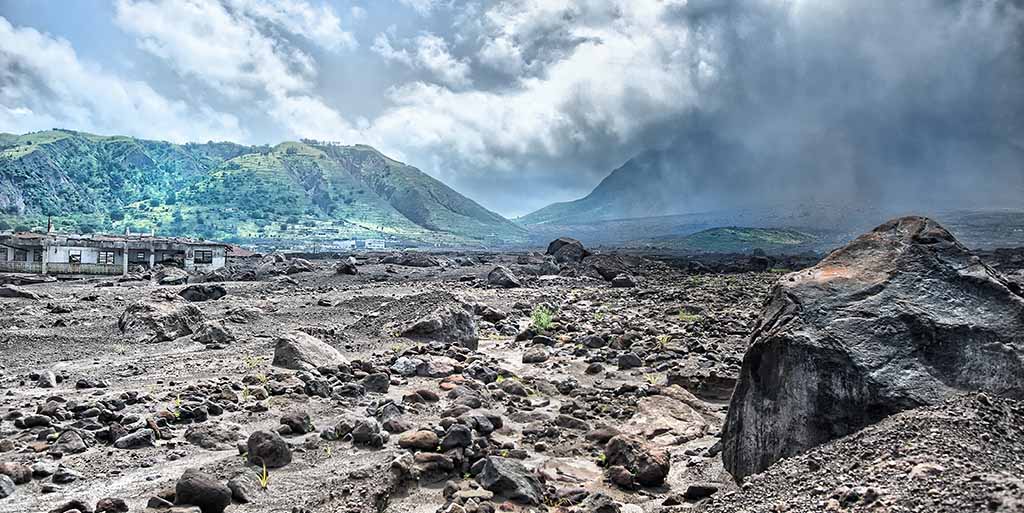In the Caribbean, amidst the azure waters and lush landscapes, lies an extraordinary town with a history as tragic as it is captivating – Plymouth, Montserrat. Often referred to as the “Modern-Day Pompeii,” this once-thriving coastal town was buried under a cascade of volcanic ash and debris in 1995, leaving behind a haunting and surreal reminder of the raw power of nature.
Montserrat, a British Overseas Territory in the Caribbean, was a picture-perfect tropical paradise. Plymouth, the capital city, nestled comfortably on the western coast of the island, was known for its picturesque beaches and welcoming atmosphere. However, this idyllic setting took a dramatic turn when the Soufrière Hills volcano, dormant for centuries, roared back to life in the early 1990s. The first major eruption occurred in 1995, heralding the beginning of a series of catastrophic events. The capital, Plymouth, was evacuated as a result of the looming threat, and the population was relocated to the north of the island. It was a painful and unsettling exodus, as residents left their homes, belongings, and memories behind, never to return.
What remains of Plymouth today is a desolate and eerie ghost town, shrouded in ash and memories. The volcano continued to erupt sporadically, sending deadly pyroclastic flows and ash clouds down its slopes. The situation made it virtually impossible for anyone to return to the city.
The thick layer of ash that covers the town has preserved it like a snapshot in time, turning Plymouth into a chilling time capsule. The streets are eerily empty, with houses, vehicles, and even a shopping mall buried under meters of volcanic debris. Plywood boards cover windows and doors, abandoned as hastily as they were when the evacuation orders came. Nature has slowly but steadily been reclaiming this lost city, as vines and trees break through the ashen ground.

Despite the abandonment and desolation, Plymouth still draws people from around the world. Not as a bustling hub, but as a unique and haunting attraction. Visitors can take guided tours to explore the remnants of the town, guided by individuals who once called it home. One of the most striking sights is the former Montserrat Springs Hotel, which once stood as a symbol of the island’s beauty and potential. Now, it is a hollow, ash-covered shell, devoid of life but brimming with history. The former main road through Plymouth, aptly named “King’s Way,” is another poignant stop on the tour. It is now an eerie path winding through the abandoned city, flanked by the skeletal remains of buildings.
Montserrat, as an island, still lives in the shadow of the Soufrière Hills volcano. While the eruptions have become less frequent and less violent, the threat remains ever-present. The residents who chose to stay on the island have demonstrated remarkable resilience, rebuilding their lives in the safer northern regions and developing a new capital, Brades.
Plymouth, Montserrat, stands as a stark reminder of the power of nature and the impermanence of human civilization. It is a testament to the enduring spirit of the Montserratians who have faced adversity with courage and resilience. A visit to this eerie ghost town is not just an exploration of history; it’s a pilgrimage to the remnants of a paradise lost, forever frozen in time and ash. Plymouth is a living, breathing (or rather, not breathing) testament to the awe-inspiring forces that shape our world, making it a must-visit destination for history enthusiasts and curious travelers alike.


